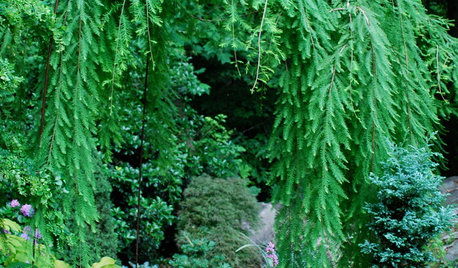Ack! What are these white powdery invaders?!
Annalyssa
10 years ago
Related Stories

WINTER GARDENINGPruning Secrets for Exquisite Roses
Encourage gorgeous blooms year after year with this time-tested advice on how to prune your rosebush in winter for health and shape
Full Story
SIDE YARD IDEASNarrow Trees for Tight Garden Spaces
Boost interest in a side yard or another space-challenged area with the fragrance and color of these columnar trees
Full Story
LANDSCAPE DESIGNThe Weepers and the Creepers: 10 Intriguing Trees for Your Garden
Bring something a little different to your landscape with a tree that dives, twists or crawls
Full Story
GARDENING GUIDESUnleash Your Guerilla Gardener
Toss some seed bombs around the yard for easy, beneficial plantings
Full StorySponsored
Franklin County's Preferred Architectural Firm | Best of Houzz Winner
More Discussions










AnnalyssaOriginal Author
strawchicago z5
Related Professionals
Cottonwood Landscape Architects & Landscape Designers · Eden Prairie Landscape Architects & Landscape Designers · Wheeling Landscape Architects & Landscape Designers · Clark Landscape Contractors · Fair Lawn Landscape Contractors · Fort Hunt Landscape Contractors · Madera Landscape Contractors · Middletown Landscape Contractors · San Pedro Landscape Contractors · Waipahu Landscape Contractors · Maple Heights Landscape Contractors · Missouri City Swimming Pool Builders · Honolulu Siding & Exteriors · Littleton Siding & Exteriors · North Bellmore Siding & Exteriorsingrid_vc so. CA zone 9
jerijen
anntn6b
dublinbay z6 (KS)
Kippy
roseseek
AnnalyssaOriginal Author
AquaEyes 7a NJ
roseseek
meredith_e Z7b, Piedmont of NC, 1000' elevation
AnnalyssaOriginal Author
roseseek
hoovb zone 9 sunset 23
michaelg
meredith_e Z7b, Piedmont of NC, 1000' elevation
AnnalyssaOriginal Author
melissa_thefarm
AnnalyssaOriginal Author
melissa_thefarm
rosefolly
AnnalyssaOriginal Author
michaelg
AnnalyssaOriginal Author
melissa_thefarm
AnnalyssaOriginal Author
melissa_thefarm
AnnalyssaOriginal Author
vasue VA